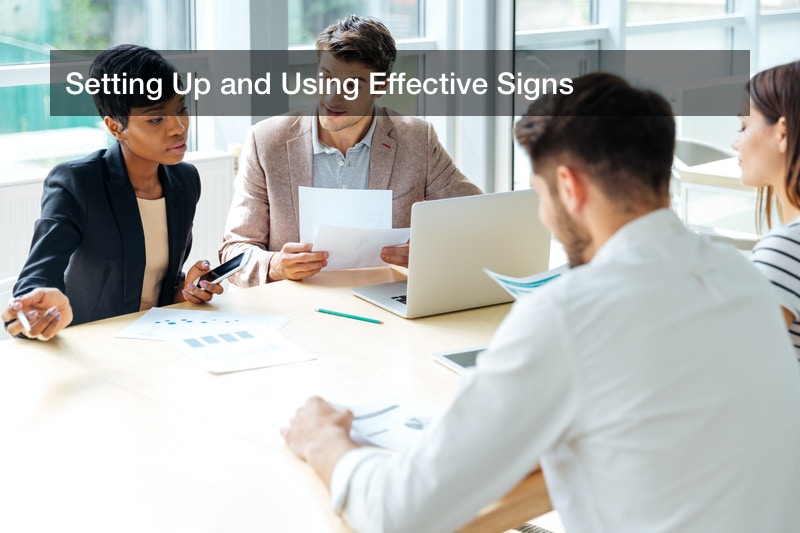

Despite the rise of the Internet and digital media such as e-mail, text messages, and social media like Twitter and YouTube, traditional signs still have a well-established place in American society (and indeed, around the world), and these signs are still as effective as ever for their intended work. Signs of all kinds can be used to convey messages like advertisements, and they can help customers locate and identify stores and shops as well as learn about new sales, discounts, or new items at those stores. Signs can also be used for political ads or for raising awareness of upcoming events. Full color LED signs, for example, may stand out in the rain or at night and can be programmed to show all sorts of static or animated images. Full color LED signs, like other electronic signs like marquees and others, can be very useful, while wooden or paper signs and posters still have the same message-sharing power that they always did. Just how effective are signs in today’s smartphone-loving world, and how can full color LED signs or business signage be designed and placed?
The Power of Signs
Signs today have a great deal of effect on the people who see them, and a lot of research every year goes into studying how to make more effective advertising campaigns. This includes signs, and they can take a variety of forms. On-site signage, for example, has been found to have the same power as 24 full-color newspaper ads every year, and everyone who goes out and about is bound to see signs in a city, town, or along a road. In fact, it has been determined that nearly 85% of a company’s customers live within a five-mile radius of the building, and this exposes potential customers to these signs around 50 to 60 times per year, meaning plenty of ad time. Often, signs may entice a customer to go into a shop for the first time and pursue a product or service, or at least look around. To put some numbers on it, studies show that if a business replaces its front wall sign with a bigger and more noticeable one, it may expect a 7.7% increase in revenue. What is more, not everyone who leaves the home has a solid idea of how to spend their money. Studies have shown that a lot of consumers’ decision-making is done while driving or even inside the store, so physical signs have an opportunity to steer customers toward particular shops or product brand names. Nearly 68% of those who responded to a recent poll, for example, said that they frequently or at least sometimes make their shopping decisions while in the car, and many other consumers are still undecided even after they have set foot inside a store. At that point, price tags, product packaging, and in-store signs and posters can make strong suggestions on how that consumer should spend their money.
Types of Signs
There is more than one way to make a sign, and different types work better in different settings. Full color LED signs, for example, may cost more to buy and operate than wooden signs or paper posters, but the advantages are many. Such signs are durable and can have attractive and even animated visuals that can change whenever the owner needs a new message to present. Full color LED signs glow, and can be easily seen in low levels of lighting or during the rain, giving them an edge over regular signs. They could be used outside an Army or Navy recruitment center, for example. Meanwhile, billboards are most often found by the road, such as highways where there isn’t much else to see, and drivers often look at them. These billboards might advertise local attractions or shops or hotels, or might host political ads or even ads for law firms nearby.
Smaller signs and posters can be found inside shops or grocery stores, and they advertise not the shop itself, but different product brands and discount prices or new sales or deals. Posters in a record shop may advertise a new album being released, or signs at the grocery store can advertise the new low price of fruit, to name just one example.